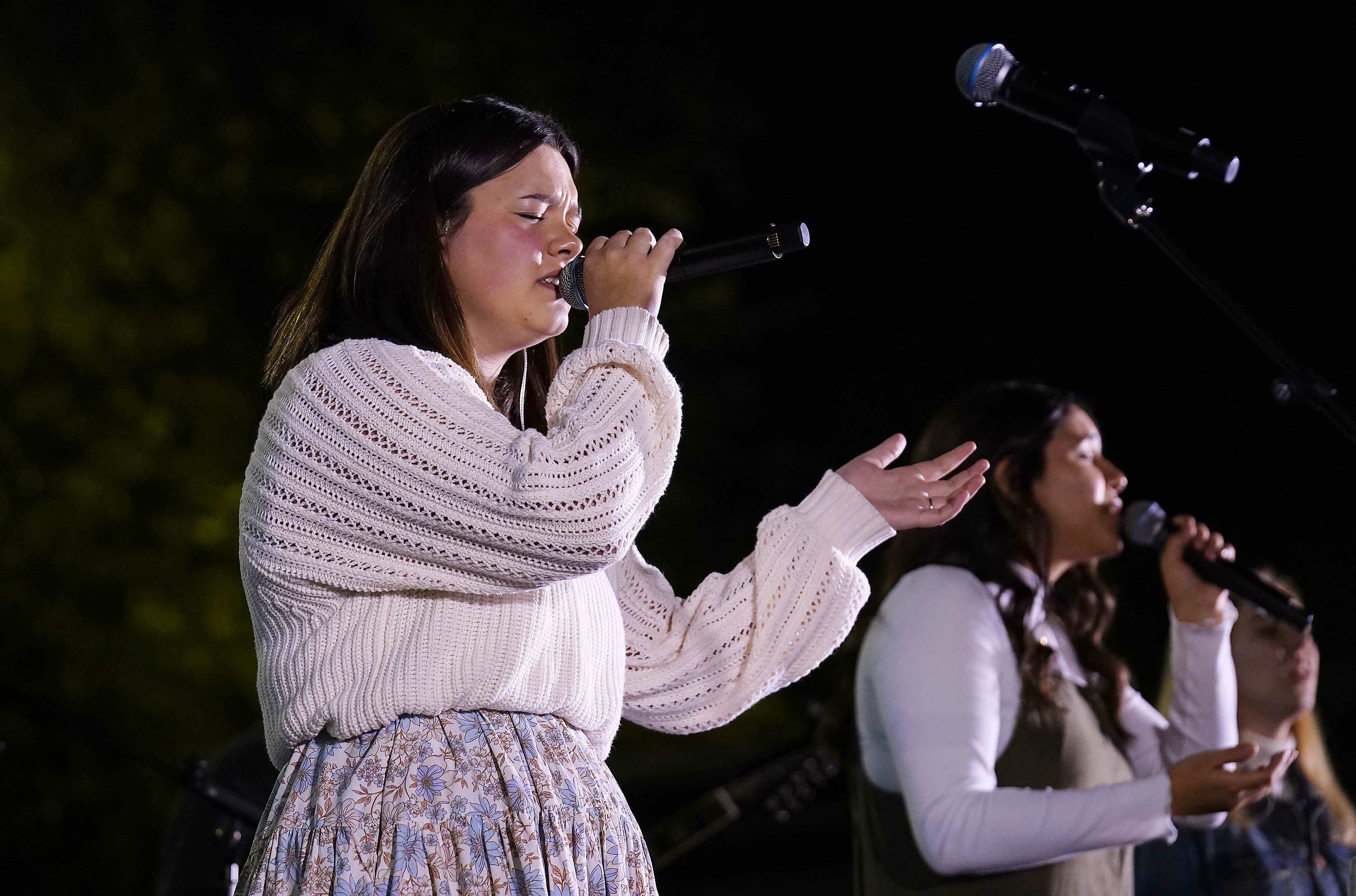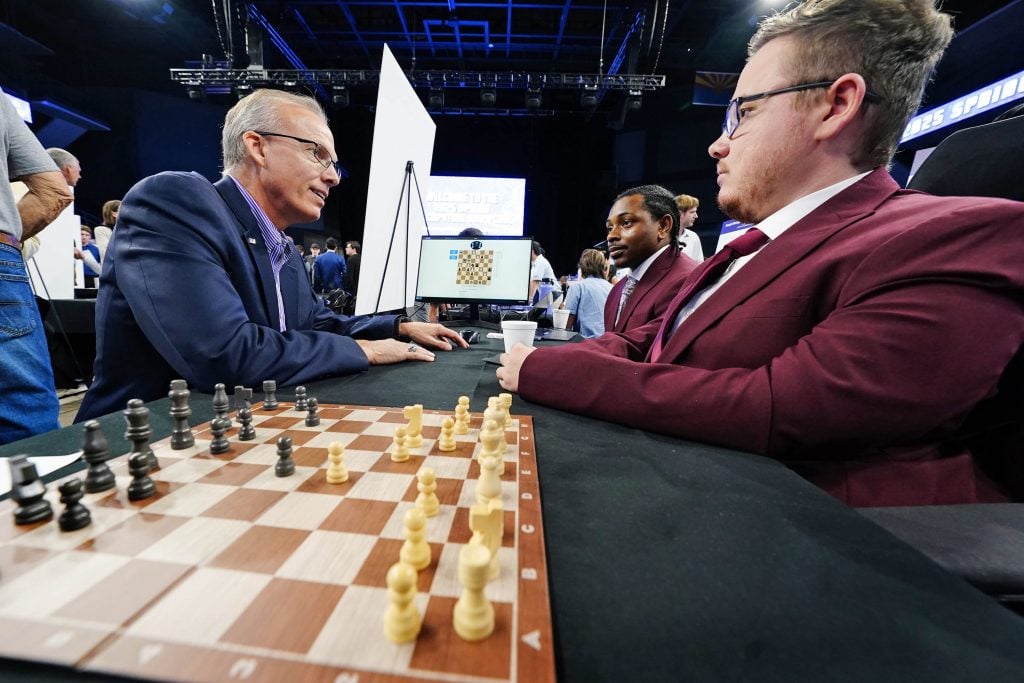
Photos by Ralph Freso / Slideshow
Phoenix’s cantankerous 110-plus degree summer days aren’t always hiking-friendly.
So, in 2021, the city started a program to close trails at Camelback Mountain and Piestewa Peak on extreme heat warning days, and just a few weeks ago added South Mountain Park to that list. Since the program’s start, the number of reported rescues has dipped from 57 to 35 in 2024.
But the city would like those numbers to drop even more.
A Grand Canyon University student team is helping by creating a real-time, outdoor visual alert system to warn hikers of potential dangers when the weather outside is more frightful than delightful.
“The goal is to prevent people from getting heat-related illnesses,” said software engineering senior Samson Becenti.
He and his team presented their project, the Preventative Hiking Injury Initiative, at Wednesday’s College of Engineering and Technology Spring 2025 Capstone Showcase. It was one of 121 projects presented on the Quad and in Global Credit Union Arena.
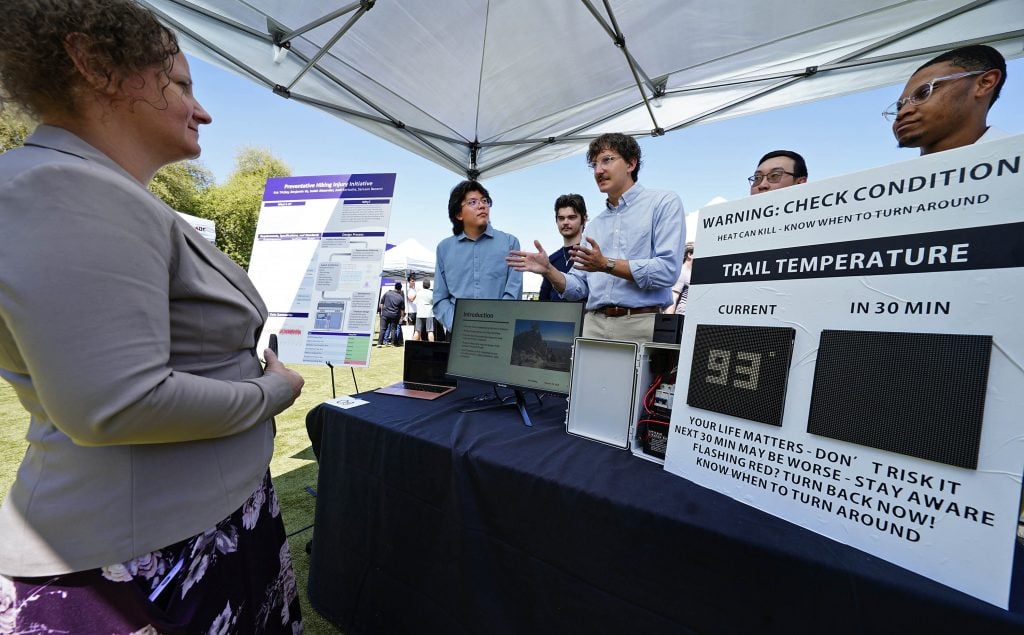
The LED signage system, housed in a weatherproof enclosure to protect it from the harsh desert elements, is powered by a raspberry pi computer and sensors and employs machine learning. The system collects temperature and humidity data, calculates the heat index and displays visual warnings based on National Weather Service thresholds. It also has a camera for object detection and activates only when hikers are nearby.
When temperatures are deemed dangerous for hiking – for a heat index of 98 and above – the sign will flash red from its usual green, when hiking’s a go, and yellow, when hikers should take extra precautions.
Becenti and his team were connected to the city – and the project – by the Connective, a nonprofit that builds partnerships to solve city challenges.
Mechanical engineering major Eric Trickey said a city planning company is working to get the visual alert system placed at the Echo Canyon Trailhead leading up to the Camelback Mountain summit.
One of the challenges for the team, which recently presented its work at the Connected 2025 expo of government leaders and technology innovators, was the slow pace of the government process. But it also “was very nice, because it’s true to the real way of doing things,” Trickey said.
The two-semester capstone process is a lead-up to graduation. Students complete a project that demonstrates all they’ve learned in their academic careers at GCU. Projects this year included everything from a solar cooking stone, to eczema relief patches, to autonomous delivery robots, to an automated cookie dough divider.
Students showcased a little more than a dozen projects in 2019 compared to the 368 students who presented their 121 projects on Wednesday. And many of those projects this year were completed in collaboration with industry partners, like the city of Phoenix.
“We’ve had a lot of good growth,” said CET assistant professor Samantha Russell, director of interdisciplinary capstones.
“The first year, we didn’t have any (industry partners),” Russell said, and this time, students worked with 18 of them, which is “feeding into that growth mindset.”
She added that the college has been increasing interdisciplinary collaborations. Several teams have technology and engineering students working on them.
"Additionally this year, we piloted collaboration with entrepreneurial students from the Colangelo College of Business," she said, with 10 business students presenting with teams.
Drone buddies
The Tactical Autonomous Cavalry Operation project team worked on a project pitched by major U.S. defense contractor Raytheon Technologies.
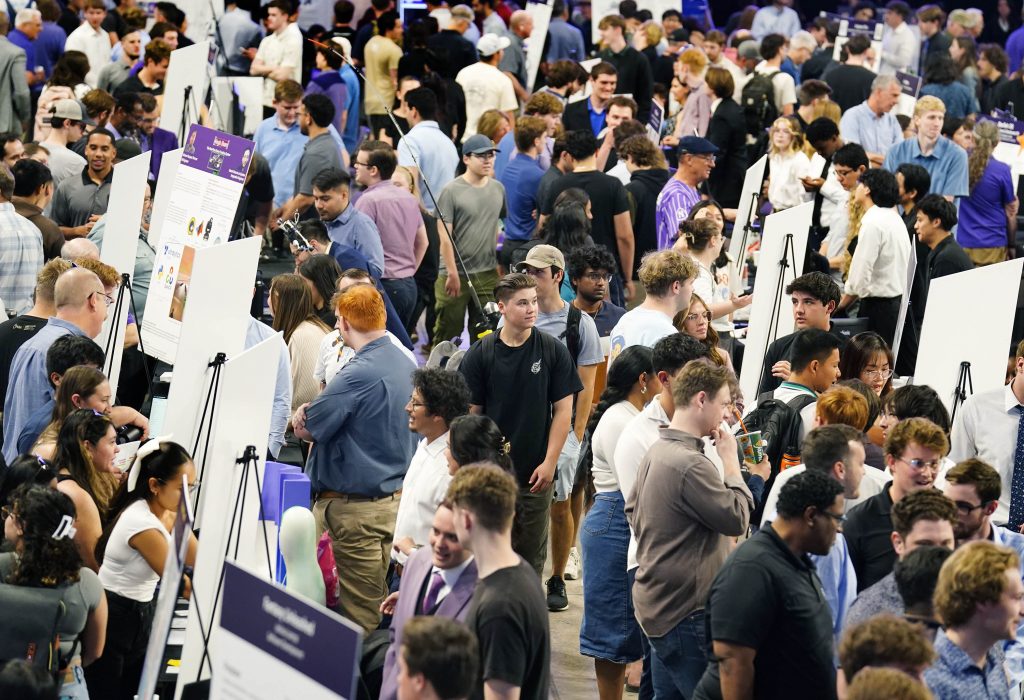
Students were tasked with buddying up an unmanned ground vehicle with an aerial drone. The team wanted the drones to communicate, “where the aerial drone tells the ground drone what to do,” said electrical engineering senior Alexander Flores, part of an eight-student team of software, mechanical, electrical and cybersecurity engineers and a software developer.
Mechanical engineering student David Glenn pointed out the ground drone they customized with a camera, which serves as a sensor, and a lidar, like the ones atop Waymo vehicles, which uses laser pulses to see a vehicle’s surroundings in 3D.
Software engineering student Kahler Litynski said, “Our hope is you can click a button and they (the drones) will complete a military mission together.”
Grand master
One project was very “War Games,” though no military mission was involved.
The 1983 film starring Matthew Broderick follows a teen who hacks into a military supercomputer while searching for a new game to play. The computer is programmed to continually run games, including chess, to learn war strategy.
“We created an AI model to learn how to play chess by itself,” said computer science major David Smical, who worked on the project with Jordan Scott.
They posed the question: Can an AI model, trained solely through self-play, with no prior knowledge of chess strategies, independently discover and master the game in a manner similar to human strategic evolution?

Humans also can play against the AI model, like some students did at the showcase.
Why this project?
“Just out of curiosity,” said Smical, to see if machines can master the game and strategize like humans have in playing chess over 1,500 years.
Proof of cookie concept
Saralyn Poole didn’t go all military for her project, instead focusing on cookies, banana bread and other recipes.
The software development major’s family has a ton of recipes scattered everywhere, she said, and thought, “There’s got to be an easy way to take a picture of a recipe and save it on my phone.”
So she came up with her Digital Cookbook Creator.
You take a picture of a recipe and it loads into the app, or you can manually type it in.
The best part of this whole thing? Her grandma’s prized cowboy cookies recipe is now safely stowed away on her phone.
App takes wing
Marin Miller, who will graduate with a software development and design degree in a couple of weeks, was tasked by the Arizona Pilots Association to come up with an app that’s one part scavenger hunt and one part tourism tool for pilots.
The association would love for pilots to drop into the 65 public-use airstrips and airports across the state, as well as other on-theme museums and attractions.
“It encourages pilots to get out and visit different airports in Arizona,” Miller said.

Through the app, pilots can view location and visitation information, compare their progress with other users on a leaderboard and scan QR codes at each location to register a visit.
Miller’s challenge in taking on this project, she said, is that “I’m completely new to mobile app development. I had to learn a new language and framework.”
The learning curve was steep, but she learned a lot, she said.
E-bike dynamos
Going from flight to e-bikes at the showcase, mechanical engineering major Justin Begay’s team designed an e-bike dynamometer to measure the torque, power and revolutions-per-minute of an electric bicycle.
The project was suggested by Lectric eBikes, co-founded by GCU alumnus Levi Conlow, who started an electric skateboard company on campus before launching the e-bike business. The dynamometer will help the company test its and competitors’ e-bikes so Lectric eBikes can continually improve its designs.
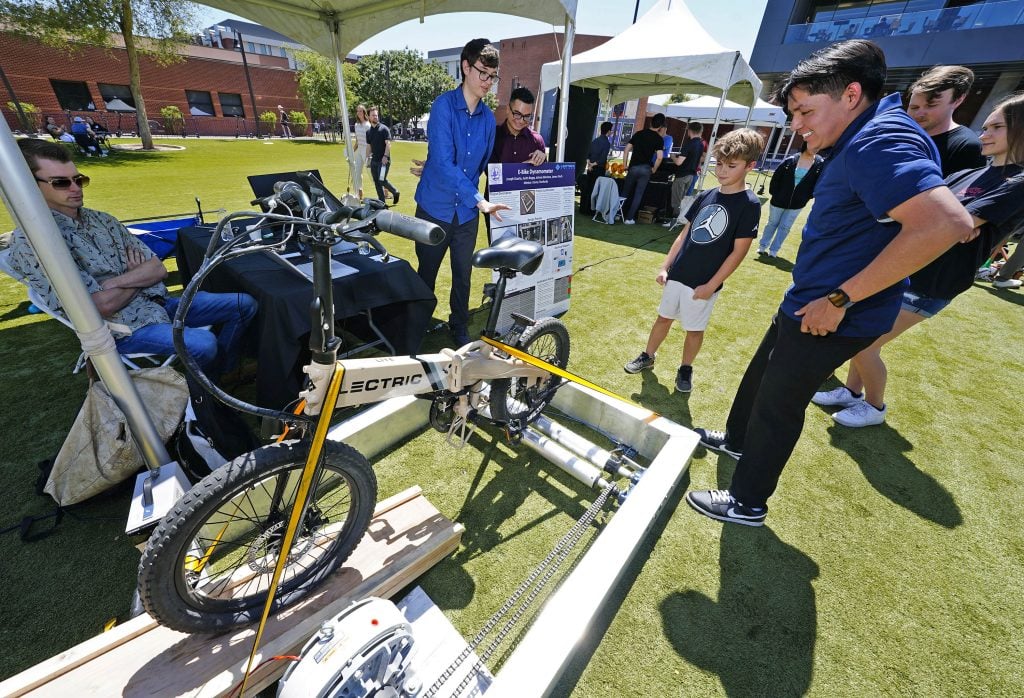
Begay said the team had to learn all sorts of skills to get the job done.
“I had to learn how to program, how to manufacture parts, how to lead a team,” he said as he pointed to the 4x4 aluminum frame in which bikes sit for testing.
Begay must have known how to weld together that snazzy aluminum frame, right?
“No,” he said with a smile. “I also had to learn to weld.”
Manager of Internal Communications Lana Sweeten-Shults can be reached at [email protected] or at 602-639-7901.
***
Related content:
GCU News: Support for women in engineering, technology STEMs the gap
GCU News: GCU students' lessons in cyber span from Phoenix to Hawaii
GCU News: Mechanical engineering technology student geared for success
GCU News: Rocketing to the top: An international competition with faith in STEM



